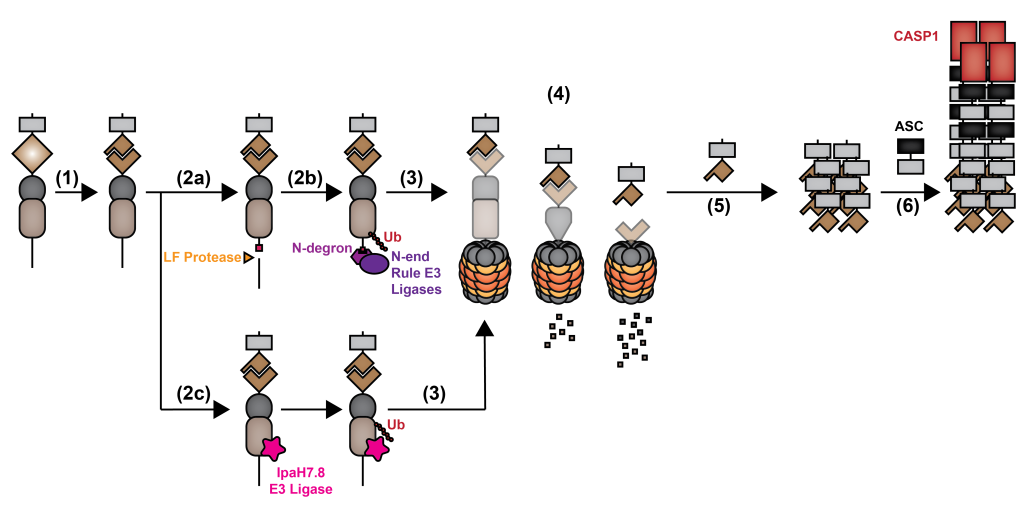The overarching goal of the Sandstrom Lab is to uncover the molecular mechanisms through which the immune system recognizes infection and stress. To understand these interactions, we use a combination of structural biology, biochemistry, microbiology, and immunology.
Our work presently focuses on how the immune system can sense pathogen-associated activities. These include the enzymatic activity of pathogen-secreted proteins or disruptions in cellular homeostasis induced by pathogens. To understand how an activity can be sensed by the immune system we study the NLRP1 inflammasome. NLRP1 is an immune sensor that recognizes pathogen-associated protease and E3-ligase activity to induce a robust inflammatory response. In short, activities that induce the proteasomal degradation of NLRP1 liberate an active fragment that acts to initiate the downstream immune response.

NLRP1B senses pathogen-associated activities via 'Functional Degradation' (1) NLRP1B undergoes an auto-catalytic processing step within the FIIND generating two separate, but associated, fragments. (2a) The Bacillus anthracis Lethal Factor (LF) protease cleaves the N-terminus of NLRP1B exposing a neo-N-terminus. (2b) The neo-N-terminus is recognized by N-end rule recognins and ubiquitylated via the N-end rule ubiquitin ligases. (2c) NLRP1B is directly ubiquitylated by the secreted Shigella flexneri E3 ligase IpaH7.8. (3) Ubiquitylation of NLRP1B targets NLRP1B for proteasomal degradation. (4) Proteasomal degradation of NLRP1B leads to the release of the C-terminal UPA-CARD fragment. (5) The released UPA-CARD fragment oli and (6) recruites ASC and activates CASP1 to initiate an inflammatory immune response.
Active projects in the lab include:
- Characterization of Shigella flexneri and other pathogen-secreted activators of the NLRP1 inflammasome
- Identification of cancer-associated inducers of NLRP1 activation
- Discovery of novel regulators of NLRP1 activation
Our Open Questions:
- Why do pathogens target NLRP1 for degradation when degradation initiates an inflammatory immune response?
- Auto-active alleles of NLRP1 promote squamous cell carcinomas. Does NLRP1 play a role in the development of other cancers?
- What mechanisms act to regulate NLRP1 function?